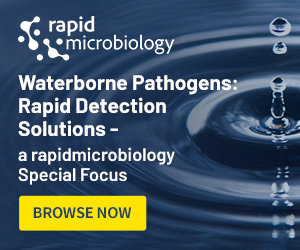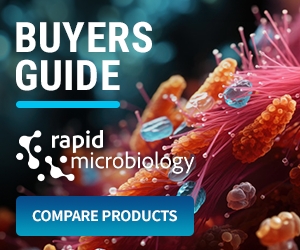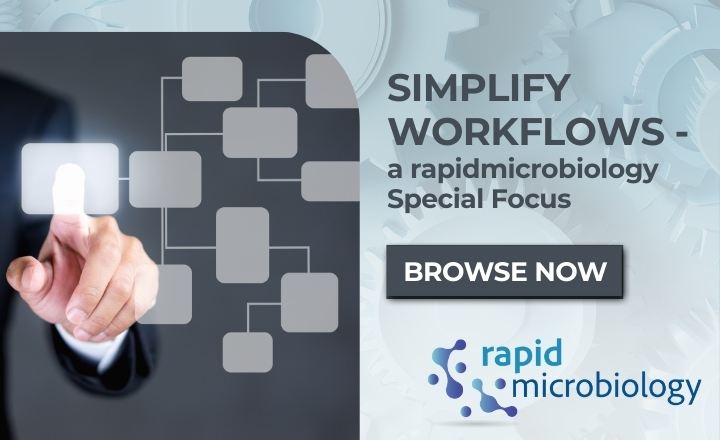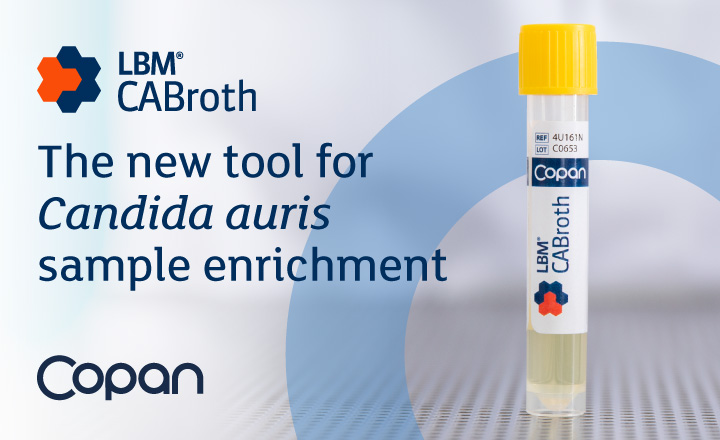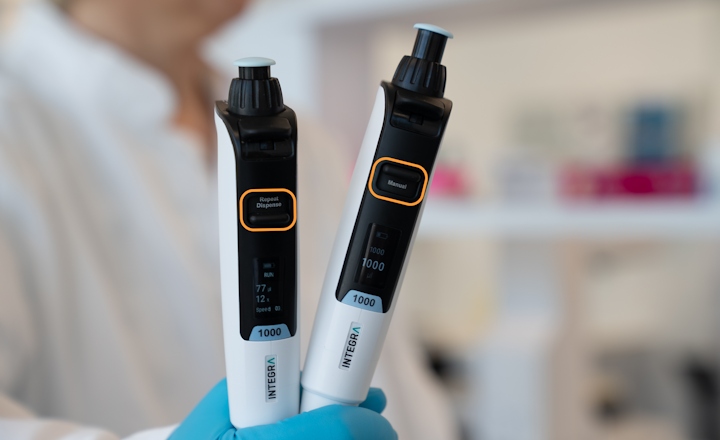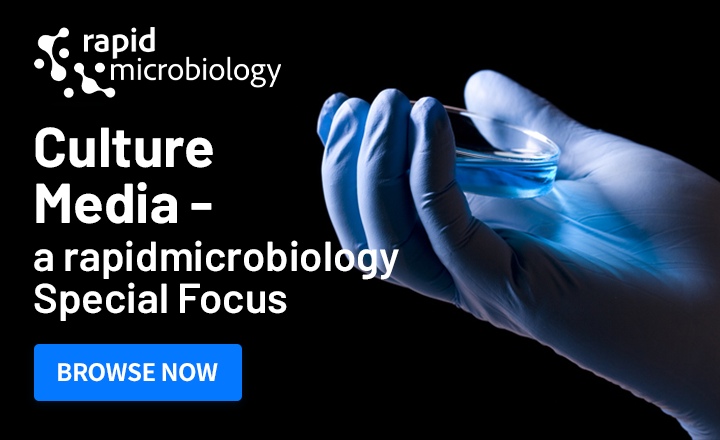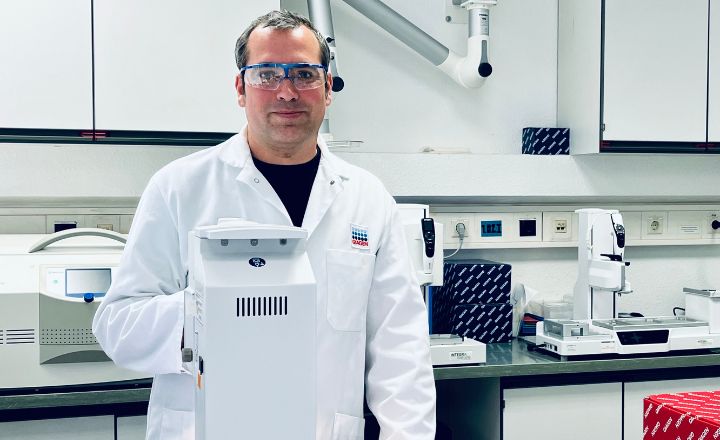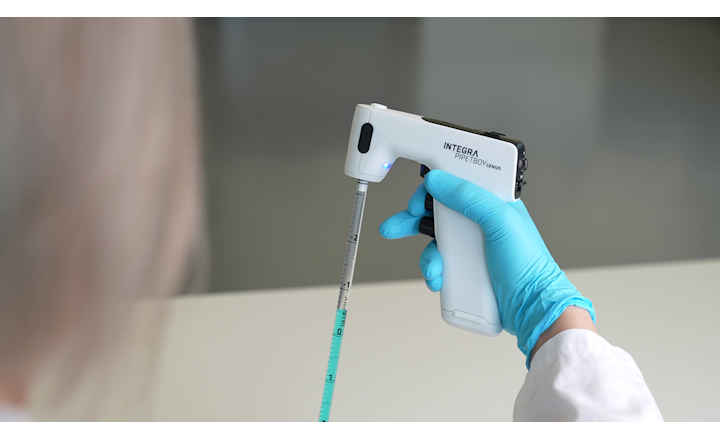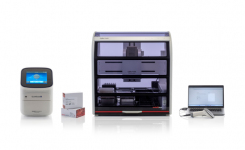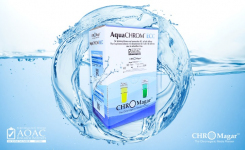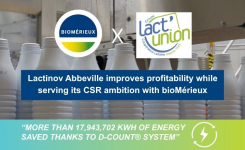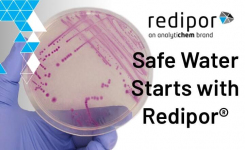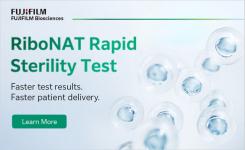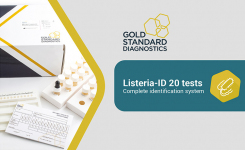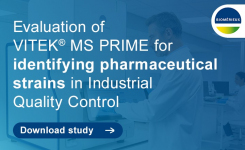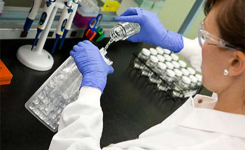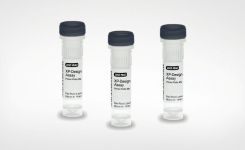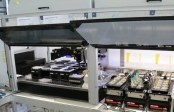 TWB, French pre-industrial demonstrator and Hamilton, a leader in life sciences robotics, have collaborated for 18 months to develop an innovative bioprocessing platform for the in-depth characterization and culture optimization of microorganisms. This platform, with 24 integrated mini-bioreactors (50 mL), will significantly speed up the process to develop industrial bioprocess solutions for a wide range of applications in green chemistry (e.g. chemicals, enzymes, biopolymers, biofuels …). With this new acquisition, TWB widens its technical service offerings to researchers and industries for their R&D projects.
TWB, French pre-industrial demonstrator and Hamilton, a leader in life sciences robotics, have collaborated for 18 months to develop an innovative bioprocessing platform for the in-depth characterization and culture optimization of microorganisms. This platform, with 24 integrated mini-bioreactors (50 mL), will significantly speed up the process to develop industrial bioprocess solutions for a wide range of applications in green chemistry (e.g. chemicals, enzymes, biopolymers, biofuels …). With this new acquisition, TWB widens its technical service offerings to researchers and industries for their R&D projects.
"White biotechnology is becoming a more and more important industrial field", says Jörg Pochert Vice President Life Science Robotics at Hamilton. "The growing demand for enzymes in industries such as pharma, cosmetics, food and beverage, animal feed, detergents and many others is spurring a lot of research and development efforts. In addition, there is an increased interest in green chemistry, biotechnologically fermented chemicals as a sustainable alternative to their traditional petrochemical counterparts. In working with TWB we are at the forefront of this development."
High throughput culture platform
The platform is based on a system for culture optimization, already in routine operation. It consists of a Hamilton Microlab STARplus with 3 HEL PolyBLOCK bioreactors. The Hamilton workstation automates the media fill, inoculation, sampling and sample processing. Different devices are integrated: a Hamilton on-deck -20°C freezer connected by a Hamilton Rack Runner to a centrifuge, a 4°C storage, an OD reader and a Hamilton LabElite™ ID capper/decapper. Microorganisms are pre-cultured in a microtiter plate inside the reader. Clones reaching a define OD are then successively inoculated into one of the 24 bioreactors. Culture growth in the bioreactors is monitored by an internal OD probe. Temperature, agitation, airflow, dissolved oxygen and pH are controlled and constantly recorded and samples are regularly quenched, filtered and stored in microplate format. Biokinetics of transcriptomic or metabolic evolution can be accessed. The value of having this automation is to carry out Design of Experiments (DoE) with a controlled culture environment allowing to access to optimal medium composition or strain construction based on relevant criteria like productivity or conversion yield in a minimum time.
Moreover, a system for genetic engineering of microorganisms is currently in preparation by Hamilton. TWB will integrate the two platforms to offer a global approach from strain engineering to culture process.
A huge technological advance for TWB’s partners and industrial biotechnology community
"The system offers unique advantages and is fully adapted to the needs of bioprocesses development" explains Julien Cescut, Manager of the Biotransformation & Culture platform at TWB. "The overall goal of this platform is to provide a robust and high throughput model for process development for biopharma and industrial biotech.
The conditions in the mini-fermenters are very close to the conditions in the bigger fermenters. This allows TWB to work close to stirred tank reactors conditions. In addition, all fermenters are independent from each other which allows combinations of environment parameters in Design of Experiments. Samples are regularly taken online and are immediately frozen on deck. This ensures maximum sample integrity for analysis. The robotic culture system is like an automated multiplex fermenter which keeps throughput advantage of microplate screening and information quality of standard stirred tank reactors. The workstation allows accelerating the selection, the performance evaluation and the optimization of microbial cell factory for industrial applications. Different workflows are available such as rapid screening and characterization of strains coming from industrial libraries or optimization of environment conditions by design of experiment in several weeks instead of several months.
"The culture robot workload is already complete for one year!" adds Julien Cescut. The first projects concern the maximization of culture conditions of an industrial yeast in one run (DoE), the optimization of culture medium composition for ethanol production, the improvement of continuous culture media for biocide production and the optimization of induction timing for protein secretion.
Currently, Hamilton and TWB are preparing an application note about the system. Some typical applications include:
- Screen and characterization of dozens of strains
- Optimization of environmental conditions by experimental designs
- Process robustness test
- Strain evolutions in parallel.




